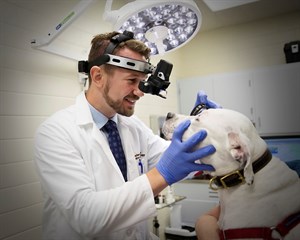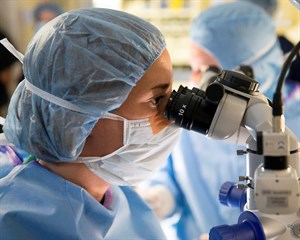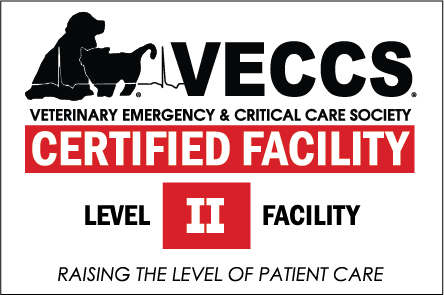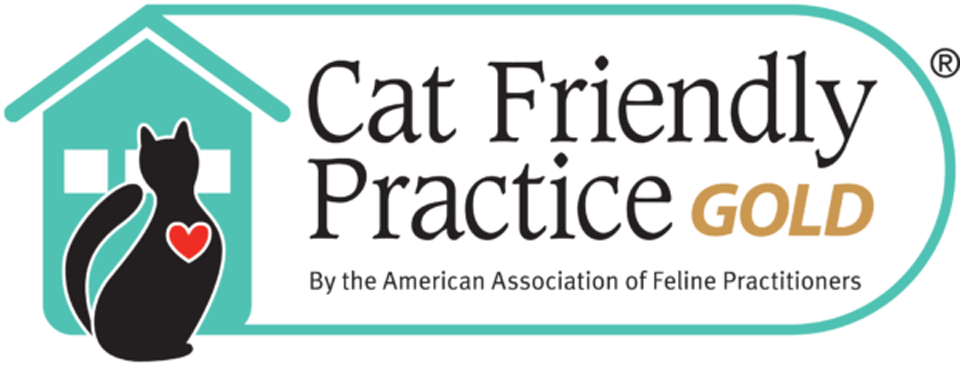SURGERY AND CARE
About cataract surgery

Cataract surgery is an elective procedure, so it is important that your pet is in good health. If your pet has diabetes, it will improve the surgical outcome if the diabetes is well controlled with medication. We require that a “glucose curve” be performed prior to surgery to demonstrate that the diabetes is well controlled. This involves measuring your pet’s blood glucose prior to the first insulin dose in the morning and then every few hours throughout the day for 8 to 12 hours.
If inflammation inside the eye is seen on your pet’s eye exam, we will need to treat your pet with anti-inflammatory medication prior to surgery. Performing surgery on your pet with inflammation inside the eye can increase the rate of complications that can occur after cataract surgery. In some instances, the inflammation may be too severe and your pet may not be a good candidate for surgery. We will also discuss other abnormalities that are noted that may prevent your pet from having surgery or increase the risk of complications after surgery. Examples of these include poor tear production and glaucoma.
The retina, tissue that lines the back part of the eye, is responsible for collecting the images that your pet sees and must be tested prior to surgery. If the retina is not functioning, removing the cataract will not improve your pet’s vision. The two tests routinely performed include an ultrasound and an electroretinogram (ERG). The ultrasound allows us to tell if the retina is in the right place and not detached (separated from the underlying support tissue). The ERG is somewhat similar to an EKG for your heart. It allows us to measure electrical potentials from the retina when a light is flashed into your pet’s eye – in other words, how well the retina responds to light. These tests are not painful and can be done on most dogs without sedation. However, it does require that your pet stay with us for a few hours so we can complete the tests.
How is cataract surgery performed?

The procedure to remove your pet’s cataracts is very similar to the procedure used in people. Under a general anesthetic, a small incision is made into the eye. A special ultrasonic unit the size of the lead of a pencil is used to break the cataract into small pieces and aspirate it out of the eye.
Placement of an artificial intraocular lens (IOL) restores the focusing power of the eye and provides the best vision possible after surgery. Not every patient, however, is a good candidate to receive an IOL. These patients will be “farsighted” but still function well.
In most cases your pet will stay at the hospital for two nights. This includes the night prior to surgery and the night of surgery. If complications should occur, a slightly longer stay may be required.
What is the follow up care involved?
Immediate follow-up care involves treatment with eye drops and possibly oral medications. The medications prescribed are generally anti-inflammatories and antibiotics. The first week, the frequency of treatment with eye drops is between four to six times a day. On average, we require a visit one week after surgery, three weeks after surgery, then every 3-6 weeks for a couple of months, then every three to four months for the first year. The frequency of visits depends on how well your pet is doing and if there are any post-operative complications that need to be monitored more closely. At each of these visits, if your pet is doing well, we decrease the frequency and number of medications. We will need to see your pet every 6 months to every year for the rest of your pet’s life as many pets will need to be on life-long medication. These medications and recheck exams are important to ensure the long-term success of the surgery.
What are the potential complications?
Complications associated with surgery for the eye include chronic severe inflammation, glaucoma, retinal detachments, regrowth of cataract, and infection. Any of these complications could result in the loss of vision. In rare cases such as severe inflammation or glaucoma, it may also result in a loss of the pet’s eye. The rate of any one of these complications is around 10%. Some breeds and animals have preexisting conditions that increase the risk of complications in the long term. These will be discussed with your at the time of your examination. These complications can occur throughout your pet’s lifetime, so long-term recheck visits will help us identify these problems early, when they are most easily treated.
What is the postoperative prognosis?
The post-operative prognosis for vision is generally very good for most patients. Following the recommendations we provide for care after surgery will help you achieve the best possible outcome.
Modified with permission from the UW Veterinary Care Center at the University of Wisconsin-Madison



